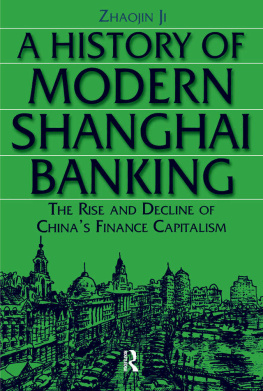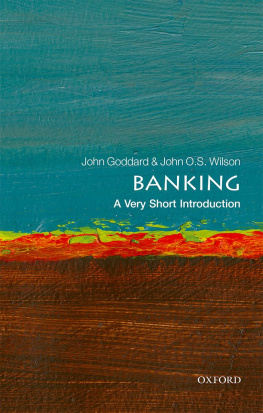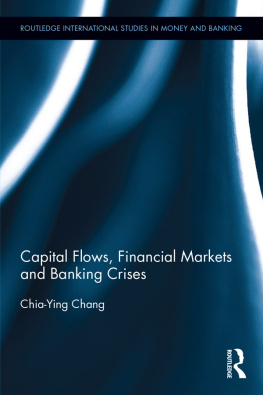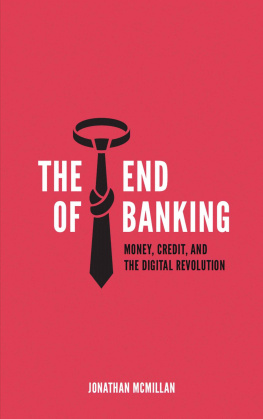A HISTORY OF MODERN SHANGHAI BANKING
Studies on Modern China
CHILDREN'S LITERATURE IN CHINA
From Lu Xun to Mao Zedong
Mary Ann Farquhar
CHINA'S LAST NOMADS
The History and Culture of China's Kazaks
Linda Benson and Ingvar Svanberg
THE CHINESE NATIONAL CHARACTER
From Nationhood to Individualilty
Lung-kee Sun
HAKKA CHINESE CONFRONT PROTESTANT CHRISTIANITY, 1950-1900
Jessie G. Lutz and Rolland Ray Lutz
A HISTORY OF MODERN SHANGHAI BANKING
The Rise and Decline of China's Finance Capitalism
Zhaojin Ji
IMAGINING THE PEOPLE
Chinese Intellectuals and the Concept of Citizenship, 1890-1920
Edited by Joshua A. Fogel and Peter Zarrow
INDUSTRIAL REFORMERS IN REPUBLICAN CHINA
Robin Porter
THE KWANGSI WAY IN KUOMINTANG CHINA, 1931-1939
Eugene William Levich
"SECRET SOCIETIES" RECONSIDERED
Perspectives on the Social History of Early Modern South China and Southeast Asia
Edited by David Ownby and Mary Somers Heidhues
THE SAGA OF ANTHROPOLOGY IN CHINA
From Malinowski to Moscow to Mao
Gregory Eliyu Guldin
MODERN CHINESE WRITERS
Self-Portrayals
Edited by Helmut Martin and Jeffrey C. Kinkley
MODERNIZATION AND REVOLUTION IN CHINA
June Grasso, Jay Corrin, and Michael Kort
PERSPECTIVES ON MODERN CHINA
Four Anniversaries
Edited by Kenneth Lieberthal, Joyce Kallgren, Roderick MacFarquhar, and Frederic Wakeman, Jr.
READING THE MODERN CHINESE SHORT STORY
Edited by Theodore Huters
UNITED STATES ATTITUDES TOWARD CHINA
The Impact of American Missionaries
Edited by Patricia Neils
A History of Modern Shanghai Banking
THE RISE AND DECLINE OF CHINAS FINANCE CAPITALISM
ZHAOJIN JI
First published 2003 by M.E. Sharpe
Published 2016 by Routledge
2 Park Square, Milton Park, Abingdon, Oxon OX14 4RN
711 Third Avenue, New York, NY 10017, USA
Routledge is an imprint of the Taylor & Francis Group, an informa business
Copyright 2003 by Zhaojin Ji
No part of this book may be reprinted or reproduced or utilised in any form or by any electronic, mechanical, or other means, now known or hereafter invented, including photocopying and recording, or in any information storage or retrieval system, without permission in writing from the publishers.
Notices
No responsibility is assumed by the publisher for any injury and/or damage to persons or property as a matter of products liability, negligence or otherwise, or from any use of operation of any methods, products, instructions or ideas contained in the material herein.
Practitioners and researchers must always rely on their own experience and knowledge in evaluating and using any information, methods, compounds, or experiments described herein. In using such information or methods they should be mindful of their own safety and the safety of others, including parties for whom they have a professional responsibility.
Product or corporate names may be trademarks or registered trademarks, and are used only for identification and explanation without intent to infringe.
Library of Congress Cataloging-in-Publication Data
Ji, Zhaojin
A history of modern Shanghai banking: the rise and decline of Chinas finance
capitalism / Zhaojin Ji.
p. cm.
An East gate book.
Includes bibliographical references and index.
ISBN 0-7656-1002-7 (cloth: alk. paper)
1. Banks and bankingChinaShanghaiHistory. 2. Banks and banking,
ForeignChinaShanghaiHistory. 3. FinanceChinaShanghaiHistory. I. Title.
HG3340.S52 J5 2002
332.1'0951'132dc21
2002029407
ISBN 13: 978-0-7656-1003-4 (pbk)
ISBN 13: 978-0-7656-1002-7 (hbk)
To my parents Xia Huiqin and Ji Zhitai
Contents
| Illustrations |
The Shanghai City Temple and its "Inner Garden" where
the guildhall of the Shanghai Native Bankers Association
was located in 1872 |
The banking regulations of the Ningbo Commercial and
Savings Bank in 1923 |
Organization chart of the Shanghai Commercial and
Savings Bank |
Letter from Chiang Kai-Shek to the Shanghai Native
Bankers Association |
| Photographs |
The bank building of the Chartered Bank of India, Australia,
and China in the 1930s |
The bank building of the Hongkong and Shanghai Banking
Corporation |
The bank building of the Deutsch-Asiatische Bank, which
became the bank building of the Bank of Communications |
The American Asiatic Underwriters and the Asia Life Insurance
Company were in this building in the 1930s |
T.V. Soong and Mrs. Soong welcome Sir Frederick Leith-Ross
and Mrs. Leith-Ross to Shanghai on September 21, 1935 |
A run on a bank in Shanghai between December 1948 and
January 1949 |
| Tables |
Deposits Received by the Hongkong and Shanghai Banking
Corporation, 1865-1930 |
Dual Role of Compradors as Foreign Employees and
Native Bankers |
List of Major Shareholders in the Ningbo Commercial
and Savings Bank |
Domestic Bonds Issued by the Beiyang Government from
1912 to 1925 |
Perhaps it is cultural bias, perhaps it is hometown affection. Having been away from Shanghai for more than fifteen years, I could not help but miss it. This emotion has stimulated me to write about the people, the city, and the history, in particular, Shanghai's banking history. This history amazes me and has a special meaning to my family. My grandfather devoted his life to Shanghai banking for more than a half-century, my father has worked and observed Shanghai's changing banking industry for the past half-century, and I have committed myself to writing about Shanghai banking in the twenty-first century.
This study of the modern history of Shanghai banking over the past 150 years grew not only from family interests but also from work experience and research seminars in Shanghai and Washington, DC. When I worked at the Shanghai Academy of Social Sciences between 1983 and 1985, I learned old stories about Shanghai and its economic history. When I attended a research seminar at the Paul H. Nitze School of Advanced International Studies of the Johns Hopkins University in the spring of 1994, I found that there were only a few comprehensive books on the subject during my preliminary research. I decided to commit myself to writing a book on Shanghai banking.
This book starts with a search for the origins of Shanghai qianzhuang (native banks) and their subsequent rise and fall in modern Chinese history. Some may question the importance of writing about native banks, considering them the product of a "feudalistic" society that belongs to the past. However, the phenomenon of native banks still exists today in terms of the relationship between private entrepreneurs and individual financial lenders. The pre-modern history of native banks provides many sources for understanding the development of China's modern banking and finance. At the same time, the pre-modern history of native banks also reflects the influence of Chinese traditional culture and the impact of Confucian values on economic life.
This book illustrates the intricacy of international relations in modern China by showing the cyclical nature of foreign banking and finance in Shanghai. The rise of foreign banks was a result of foreign trade and foreign loans (in terms of railways, telegraphy, and political indemnity). Under the protection of several unequal treaties signed in the mid-nineteenth century, foreign banks enjoyed extraterritorial rights in China, which included the freedom to issue their own banknotes. Shanghai's modern financial market has been closely related to world financial markets since the 1850s. With the adoption of the gold standard in Germany and the discovery of Nevada silver mines in the United States in the early 1870s, the value of silver in Shanghai depreciated quickly. China was forced to abolish the silver standard and to adopt a managed foreign reserve system after the onset of the world economic depression and the U.S. Silver Purchase Act in the early 1930s. Finally, Shanghai financial markets were very sensitive to London financial markets because telegraphy services had closely linked both cities since 1871. Thus, the concept of "globalization" is not new to Shanghai. It emerged early as a real theme, and then as reality in Shanghai in the modern era.
Next page










